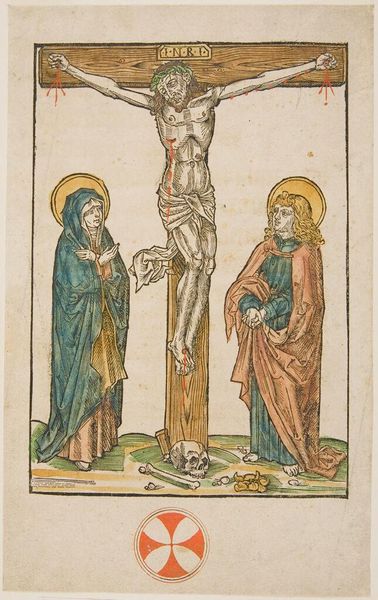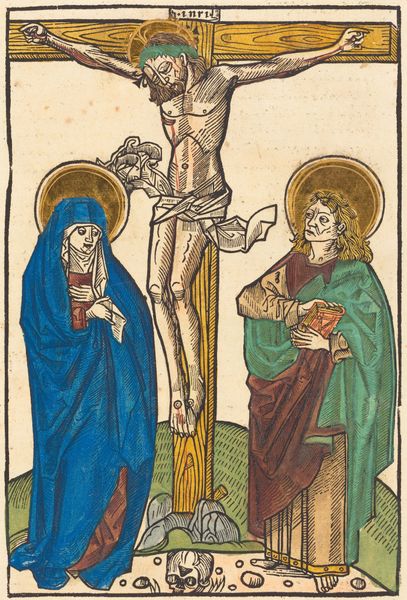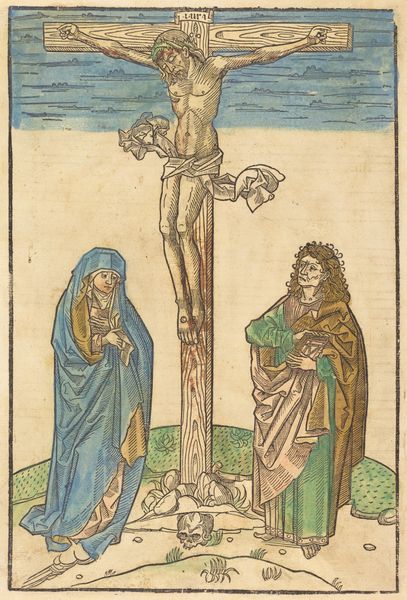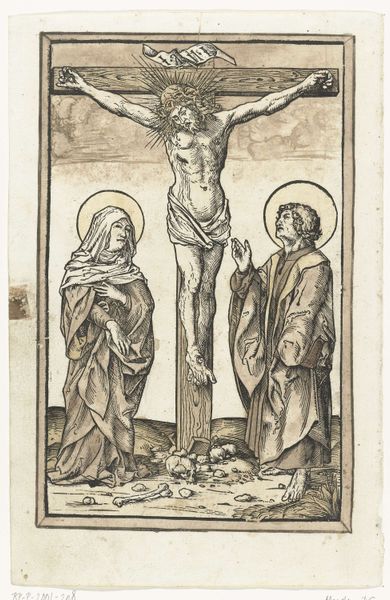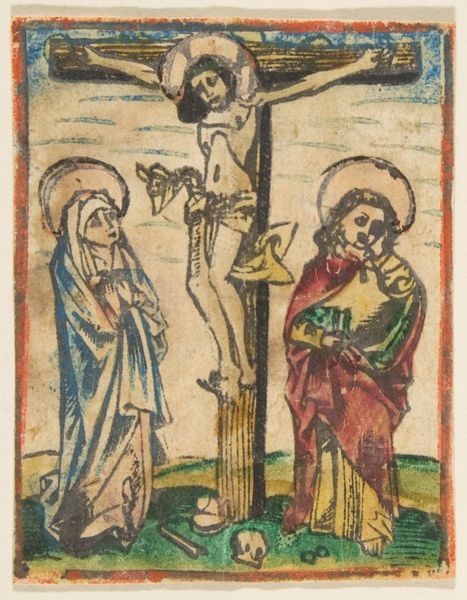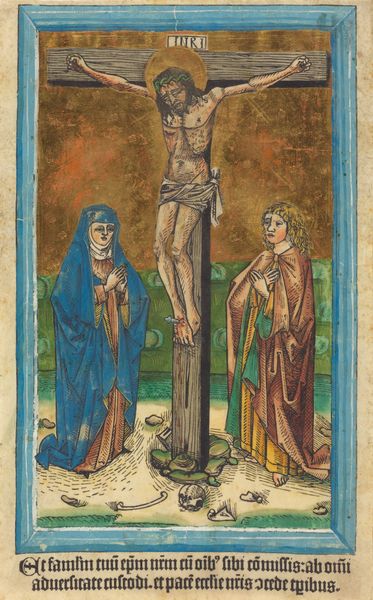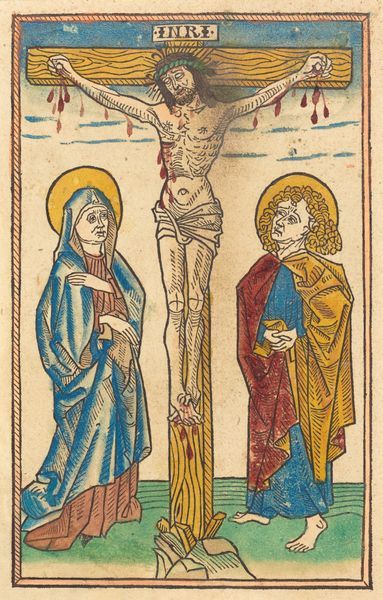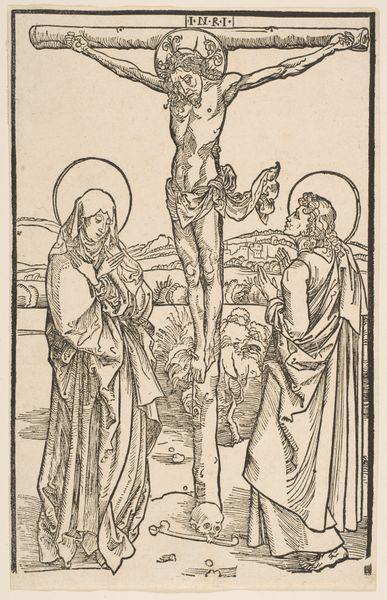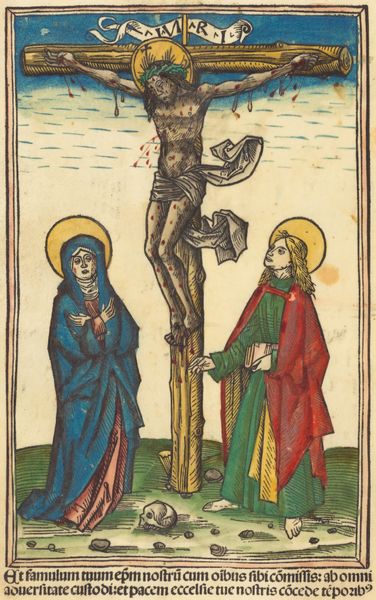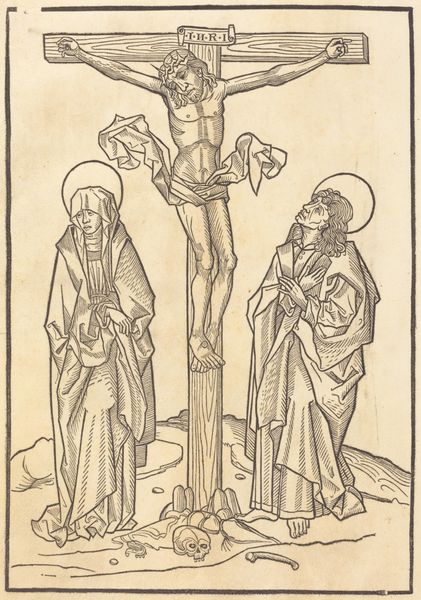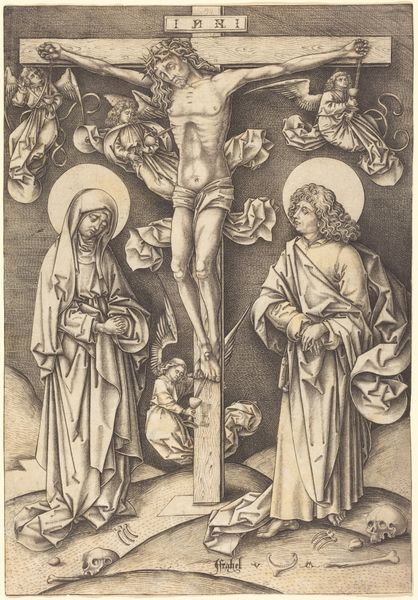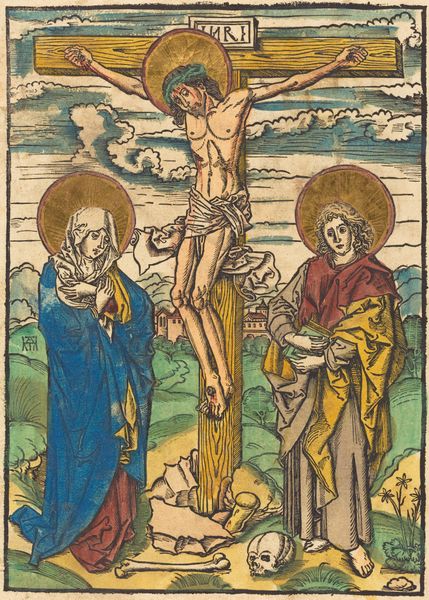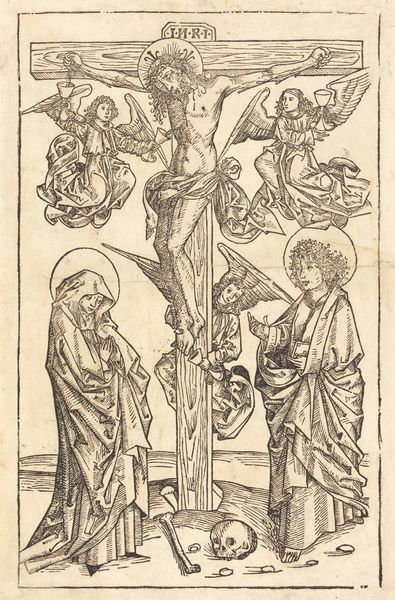
Christ on the Cross with the Virgin and Saint John, from the Passau Missal (Missale Pataviense) 1505
0:00
0:00
drawing, print, woodcut
#
drawing
# print
#
figuration
#
woodcut
#
crucifixion
#
northern-renaissance
#
virgin-mary
Dimensions: Sheet: 10 3/8 × 6 13/16 in. (26.3 × 17.3 cm)
Copyright: Public Domain
Editor: Here we have Hans Burgkmair's "Christ on the Cross with the Virgin and Saint John," a woodcut and drawing from 1505, part of the Passau Missal. It has this intense, sorrowful aura to it. What jumps out at you? Curator: The emotional intensity is undeniable. Note the way Burgkmair utilizes the traditional iconography of the crucifixion - the central placement of Christ, flanked by Mary and John – a tableau familiar throughout Christian art. But look closer. What do the halo positions and crown of thorns suggest? Editor: Well, the halos mark them as holy figures, and the crown of thorns…obviously Christ's suffering. But why represent the halos in these very simplistic ways? And are we seeing the Crown as a premonition rather than after-the-fact reality? Curator: Precisely! The stark halos draw the eye, focusing attention on the figures’ spiritual significance. The Crown symbolizes sacrifice but it is depicted 'as if', a detail underscoring human fallibility in real time: a powerful indictment about potential vs failure, not simply suffering’s inevitability. How does this reading speak to its placement within a Missal, a book of prayer? Editor: I see. It's not just a historical depiction, but an appeal to remember one’s spiritual promise within. Does the stylistic decision, a return to simplified Medieval image making techniques, carry a similar moral tone about history's lessons? Curator: A valuable connection. This artistic style consciously reaches back, anchoring faith not as some new concept but within longstanding traditions. Through recognizable archetypes like the weeping Virgin and Saint John, each generation reaffirms cultural and psychological associations with loss, piety, and steadfast belief, so it builds connection from past to future.. Editor: It’s like these figures serve as a mirror for different emotional responses to the event, not just literal portrayals. Thank you - it is a new lens through which to see the work. Curator: Indeed. By recognizing these patterns we access a richer dialogue about faith, humanity, and cultural continuity embedded in art.
Comments
No comments
Be the first to comment and join the conversation on the ultimate creative platform.
